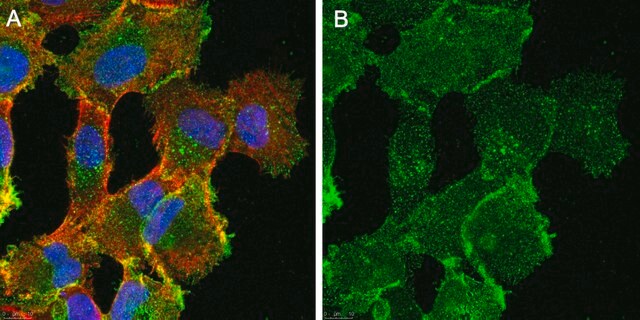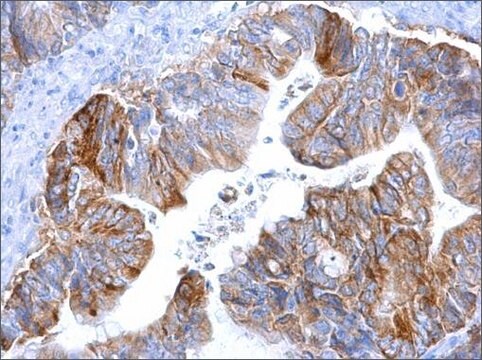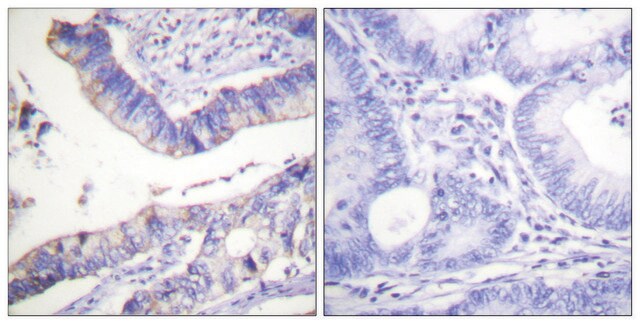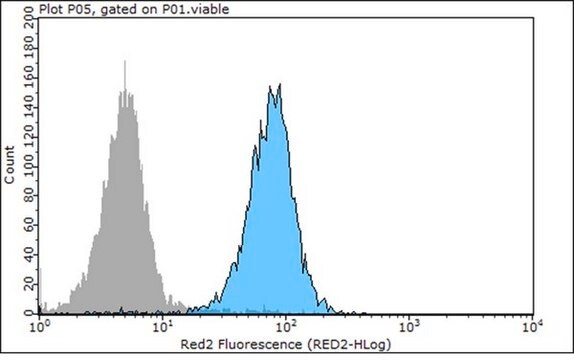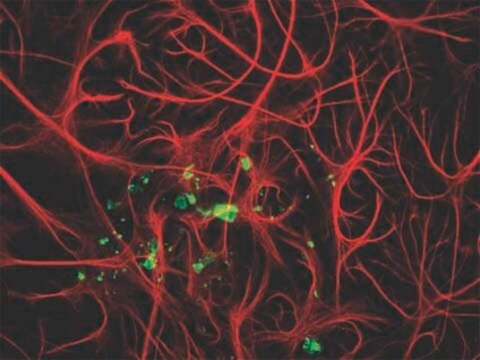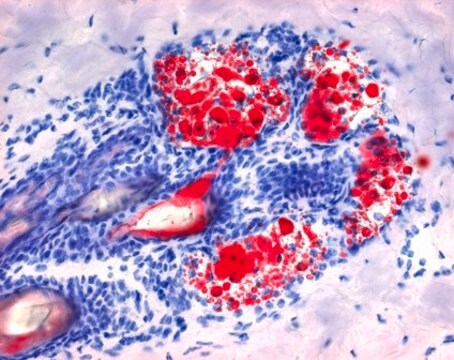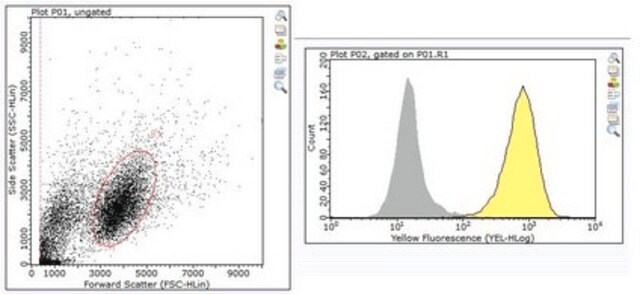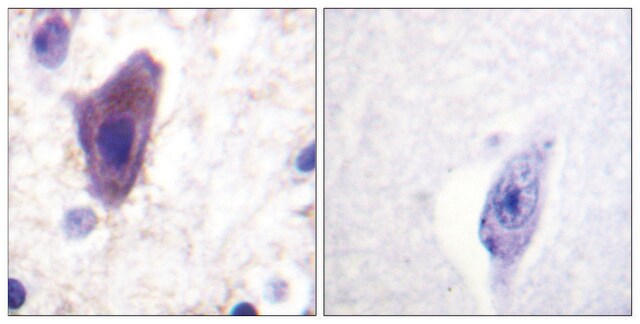SAB4700520
Monoclonal Anti-CD71 antibody produced in mouse
clone MEM-189, purified immunoglobulin, buffered aqueous solution
Sinonimo/i:
Anti-TFRC, Anti-Transferrin Receptor
Autenticatiper visualizzare i prezzi riservati alla tua organizzazione & contrattuali
About This Item
Codice UNSPSC:
12352203
NACRES:
NA.41
Prodotti consigliati
Origine biologica
mouse
Coniugato
unconjugated
Forma dell’anticorpo
purified immunoglobulin
Tipo di anticorpo
primary antibodies
Clone
MEM-189, monoclonal
Stato
buffered aqueous solution
Reattività contro le specie
human
Concentrazione
1 mg/mL
tecniche
flow cytometry: suitable
Isotipo
IgG1
N° accesso NCBI
N° accesso UniProt
Condizioni di spedizione
wet ice
Temperatura di conservazione
2-8°C
modifica post-traduzionali bersaglio
unmodified
Informazioni sul gene
human ... TFRC(7037)
Descrizione generale
Cluster of differentiation 71 (CD71), also known as transferrin receptor, is encoded by the gene mapped to human chromosome 3q29. CD71 is present on cells with high proliferation.
The antibody MEM-189 reacts with CD71 antigen (transferrin receptor), a 95 kDa type II homodimeric transmembrane glycoprotein expressed on activated B and lymphocytes, macrophages and erythroid precursors; it is lost on resting blood leukocytes.
Immunogeno
KG1 human acute myelogenous leukaemia cell line
Applicazioni
The reagent is designed for Flow Cytometry analysis. Suggested working dilution for Flow Cytometry is 2 μg/mL of sample. Indicated dilution is recommended starting point for use of this product. Working concentrations should be determined by the investigator.
Azioni biochim/fisiol
Cluster of differentiation 71 (CD71) functions as an iron regulatory protein. Overexpression of the gene has been associated with the development of various types of cancers, including cholangiocarcinoma (CCA). Thus, CD71 protein is considered as a potential therapeutic target for CCA and iron overload. The encoded protein facilitates mitochondrial respiration and reactive oxygen species (ROS) production in human pancreatic ductal adenocarcinoma (PDAC) cells, which is essential for their tumorigenic growth. Thus, aberrant expression of CD71 might also lead to the development of pancreatic cancer.
Caratteristiche e vantaggi
Evaluate our antibodies with complete peace of mind. If the antibody does not perform in your application, we will issue a full credit or replacement antibody. Learn more.
Stato fisico
Solution in Tris buffered saline, pH 8.0, with 15 mM sodium azide.
Esclusione di responsabilità
Unless otherwise stated in our catalog or other company documentation accompanying the product(s), our products are intended for research use only and are not to be used for any other purpose, which includes but is not limited to, unauthorized commercial uses, in vitro diagnostic uses, ex vivo or in vivo therapeutic uses or any type of consumption or application to humans or animals.
Non trovi il prodotto giusto?
Prova il nostro Motore di ricerca dei prodotti.
Codice della classe di stoccaggio
12 - Non Combustible Liquids
Classe di pericolosità dell'acqua (WGK)
nwg
Punto d’infiammabilità (°F)
Not applicable
Punto d’infiammabilità (°C)
Not applicable
Scegli una delle versioni più recenti:
Possiedi già questo prodotto?
I documenti relativi ai prodotti acquistati recentemente sono disponibili nell’Archivio dei documenti.
Upregulation of transferrin receptor-1 induces cholangiocarcinoma progression via induction of labile iron pool
Jamnongkan W
Tumour Biology : the Journal of the International Society For Oncodevelopmental Biology and Medicine, 39 (2017)
NotI linking/jumping clones of human chromosome 3: mapping of the TFRC, RAB7 and HAUSP genes to regions rearranged in leukemia and deleted in solid tumors.
Kashuba VI
Febs Letters, 419, 181-185 (1997)
Transferrin receptor regulates pancreatic cancer growth by modulating mitochondrial respiration and ROS generation.
Jeong SM
Biochemical and Biophysical Research Communications, 471, 373-379 (2016)
Transferrin receptor (CD71) is a marker of poor prognosis in breast cancer and can predict response to tamoxifen
Habashy HO
Breast Cancer Research and Treatment, 119, 283-293 (2010)
Richard C A Sainson et al.
Cancer immunology research, 8(12), 1568-1582 (2020-10-02)
The immunosuppressive tumor microenvironment constitutes a significant hurdle to immune checkpoint inhibitor responses. Both soluble factors and specialized immune cells, such as regulatory T cells (Treg), are key components of active intratumoral immunosuppression. Inducible costimulatory receptor (ICOS) can be highly
Il team dei nostri ricercatori vanta grande esperienza in tutte le aree della ricerca quali Life Science, scienza dei materiali, sintesi chimica, cromatografia, discipline analitiche, ecc..
Contatta l'Assistenza Tecnica.
